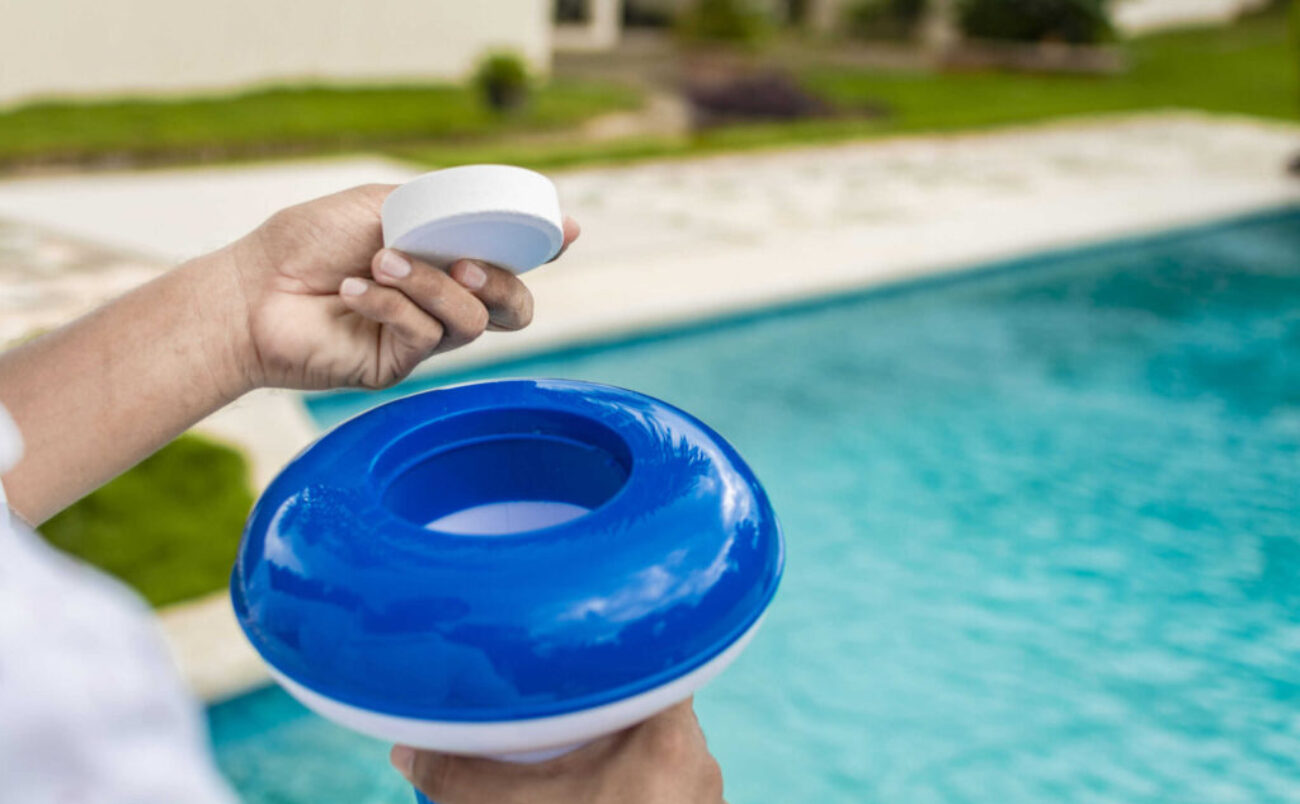Route Remix: Tailor Your Territory to Maximize Every Mile
Discover how mapping route efficiency can personalize service territories to maximize profits in the pool service industry. Optimize your business today!
In the competitive landscape of the pool maintenance industry, maximizing profit margins while providing excellent service is essential for success. One of the most effective strategies for achieving this is through mapping route efficiency and personalizing service territories. This blog post will delve into the significance of route mapping, how it can enhance operational performance, and best practices for effectively managing service territories. We will also explore how companies like Tower Business Brokers, Inc. are assisting entrepreneurs in optimizing their pool routes for maximum profitability.
IntroductionIn recent years, the pool maintenance industry has witnessed significant growth. With more homeowners investing in pools, the demand for reliable pool service providers has soared. However, as businesses expand, so do the challenges of managing service routes efficiently. Mapping route efficiency is a crucial element that can significantly impact a company’s ability to deliver timely services while keeping operational costs low. Personalizing service territories allows businesses to allocate resources more effectively, ensuring that technicians are operating within their optimal service areas. This blog post will cover various aspects of mapping route efficiency, including its benefits, tools for implementation, and strategies for personalization, ultimately leading to increased profitability for pool service providers.The Importance of Mapping Route Efficiency
– The primary goal of mapping route efficiency is to optimize the service delivery process. Efficient route mapping not only saves time but also reduces fuel costs and operational expenses. According to a study by the National Association of Professional Gutter Installers, companies that implemented route optimization saw a reduction in travel time by up to 30%. This decrease translates into significant savings and increased service capacity. – Additionally, mapping routes based on geographic proximity means that technicians can reach customers faster, resulting in shorter wait times and improved customer satisfaction. When customers feel that their service provider is responsive and timely, they are more likely to remain loyal and recommend the business to others. In a competitive market, maintaining a solid customer base is key to long-term profitability.- One effective example of route mapping can be observed in Florida’s vibrant pool maintenance sector. Companies that strategically analyze their service areas have reported not only improved efficiency but also enhanced revenue generation. By focusing on regions with higher concentrations of pool owners, businesses can allocate resources more effectively and improve overall service delivery.
Tools and Technology for Route Optimization
– The advancement of technology has revolutionized how businesses manage their routes. Several software solutions specialize in route optimization, allowing pool service companies to streamline their operations. For example, platforms like Route4Me and OptimoRoute provide tools that analyze traffic patterns, customer locations, and service times to develop the most efficient routes. These tools enable businesses to make data-driven decisions, enhancing productivity and reducing operational costs.- Moreover, mobile applications designed for service management can further enhance route efficiency. Technicians equipped with mobile devices can receive real-time updates about job changes, customer requests, or urgent service needs. This flexibility not only improves responsiveness but also allows technicians to manage their time better, leading to increased job completion rates and improved customer service.- In addition to these tools, businesses should consider investing in GPS tracking systems. These systems allow owners and managers to monitor the location and performance of their technicians in real-time. By analyzing this data, businesses can identify patterns, optimize routes continuously, and ultimately improve efficiency. Implementing these technologies can lead to substantial cost savings and a stronger bottom line for pool service providers.
Personalizing Service Territories for Enhanced Performance
– Personalizing service territories is about more than just geographical mapping; it involves understanding the specific needs and preferences of different customer segments. Local market dynamics can significantly influence customer expectations, so tailoring services to meet these needs can enhance customer satisfaction and loyalty.- For instance, in Texas, where pool ownership and usage can vary significantly across regions, service providers should consider the unique characteristics of each area. Some neighborhoods may require more frequent maintenance due to higher temperatures, while others may have different types of pool installations that necessitate specialized services. Understanding these distinctions allows businesses to allocate their resources more strategically, ensuring that each technician is best equipped to handle the unique challenges of their assigned territory.- Moreover, integrating customer feedback into service territory planning can provide valuable insights. By regularly surveying customers about their preferences and satisfaction levels, companies can adjust their service offerings and territory assignments accordingly. This proactive approach not only improves customer experiences but can also lead to increased retention rates and referrals.
Best Practices for Implementing Route Efficiency
– Implementing a successful route efficiency strategy requires careful planning and execution. Here are some best practices that pool service providers should consider:1. Data Analysis: Begin by analyzing historical data regarding service requests, customer locations, and technician performance. This data serves as the foundation for effective route mapping.2. Define Service Areas: Clearly define service territories based on geographic boundaries, customer density, and technician expertise. Ensure that each territory is manageable for your technicians, considering travel time and workload.3. Regular Reviews: Periodically review and adjust service territories based on changes in customer demand, technician performance, and market trends. This flexible approach ensures that your business can adapt to evolving conditions.4. Utilize Technology: Invest in route optimization software and GPS tracking systems to streamline daily operations. These tools not only enhance route planning but also improve communication and efficiency among team members.5. Train Your Team: Provide ongoing training to technicians on the importance of route efficiency and customer service. Empowering your team with knowledge will lead to improved service delivery and customer satisfaction.- Pool service providers can significantly enhance their operations by embracing these best practices. For instance, a company that regularly evaluates its routes and customer segments in Florida can adapt to seasonal changes in pool usage, ensuring that its services remain relevant and timely.
Case Study: Effective Route Optimization in Action
– Let’s take a closer look at the impact of route efficiency in the pool service industry through a hypothetical case study. Consider a pool service company operating in both Florida and Texas. This company had been facing issues with high operational costs and declining customer satisfaction due to delays in service.- By utilizing route optimization tools, the company was able to analyze their current routes and identify inefficiencies. They found that certain technicians were traveling excessive distances to reach customers while others had overlapping territories. By reassigning routes based on geographic proximity and technician skill sets, the company reduced travel time by 25%, leading to lower fuel costs and increased service capacity.- Additionally, through personalized service territory planning, the company discovered that certain areas had a higher demand for eco-friendly pool maintenance solutions. By tailoring their services to meet this demand, they attracted a new segment of environmentally-conscious customers, thus increasing their overall revenue.
The Role of a Pool Business Broker in Route Optimization
– If you’re considering entering the pool maintenance industry or expanding your existing operations, working with a pool business broker can be immensely beneficial. Brokers like Tower Business Brokers, Inc. specialize in providing insights into the pool routes for sale, helping buyers identify profitable opportunities that align with their business goals.- A knowledgeable broker can guide you through the complexities of purchasing a pool route, ensuring that you acquire an established customer base. This aspect is crucial for immediate income generation, as it eliminates the lengthy process of building a customer base from scratch. With access to proven, established routes, you can hit the ground running and focus on optimizing your service delivery.- Furthermore, brokers provide invaluable support in terms of training and ongoing assistance. This guidance can help you navigate the challenges of managing service territories effectively and implementing route efficiency strategies to maximize your profitability.
Continuous Improvement and Future Considerations
– The landscape of the pool maintenance industry is constantly evolving. As new technologies emerge and customer preferences change, businesses must remain adaptable. Continuous improvement in route efficiency and service territory management is essential for long-term success.- Companies should stay informed about industry trends, such as the increasing demand for automated pool cleaning systems or eco-friendly products. By leveraging these trends and integrating them into their service offerings, pool service providers can enhance their competitive edge.- Additionally, embracing sustainability practices, such as reducing fuel consumption through optimized routes, can not only improve profitability but also enhance a company’s reputation in the community. Customers are increasingly making purchasing decisions based on a company’s commitment to environmental responsibility, making this a crucial consideration for future growth.ConclusionIn conclusion, mapping route efficiency and personalizing service territories are critical components for maximizing profitability in the pool maintenance industry. By implementing effective strategies and utilizing technology, businesses can enhance their operational performance and customer satisfaction. As the industry continues to grow, working with experts like Tower Business Brokers, Inc. can provide valuable insights and opportunities for those looking to invest in pool routes for sale. The journey towards optimizing your service delivery begins with understanding your market, leveraging technology, and committing to continuous improvement. Take the next step today towards maximizing your pool service business’s potential!



